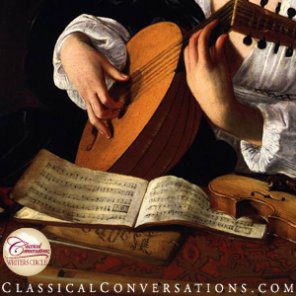Is music a liberal art?
Liberal education is under attack today, just as it has been during economic downturns in the past. Yet some of the most strident voices calling for a “bottom-line” evaluation of the liberal arts also espouse “traditional values.” For some reason, they don’t understand the link between the liberal arts and the values they claim to uphold. And, judging from the way that the same people want to cut funding for the arts in public education, they certainly don’t understand that music is one of the liberal arts.
The entire point of liberal education is to make people free. That’s why it’s called “liberal.” But the freedom of liberal education is not freedom from external restraint. It is freedom from our own immediate and unconsidered impulses. Without the ability to choose freely the desires we will seek or avoid, we remain chained to the wheel of fortune. We are mere playthings of randomness and chance.
The whole point of liberal education is the formation of character. The character that is to be formed is that of a person who is self-determining, and thus has true agency in shaping his or her own life.
In order to do that shaping, however, we must know what our impulses are. There is some difficulty here. Estimates of how many terms there are for different emotions in the English language alone range from 800 to around 3000. Given this wide variety of feelings, is there anyone who knows precisely what he or she is feeling, or how a particular feeling influences our inclinations? What is more, we appear to be growing less intelligent with regard to identifying emotions. The Elizabethans, for instance—and Shakespeare predominant among them—seemed to be conversant with far more emotional states than a modern English speaker. It seems we need some training if we are to learn what our impulses actually are, so that we can learn to choose among them.
Here music is an unparalleled aid. Why? Because music is entirely composed of “dynamic qualities” that register in us as impulses—as feelings that direct us toward and away from other sounds, just as our desires and aversions point us toward and away from other objects. Here is a simple example of a dynamic quality: sing a rising scale from do up to ti—and stop there. You will feel the impulse of the tone to rise up to the higher do. That is a dynamic quality. Every tone and combination of tones has particular dynamic qualities. To listen to music is to immerse ourselves in a swirling force field of inner impulses.
Nothing is more practical or more accurate for learning to recognize our inner impulses than the careful study of the dynamic forces in music. Mendelssohn is supposed to have said, “It’s not that music is too imprecise for words, but too precise.” But even if we can’t become as musically perceptive as Mendelssohn, the very act of focusing on the inner motions associated with music puts our attention exactly where it needs to be: on the inner impulses we must learn to recognize on the way to forming our character.
Music is a liberal art, therefore, not because of its connections with mathematics, poetry, and art, but because it can help teach us how to be free.




